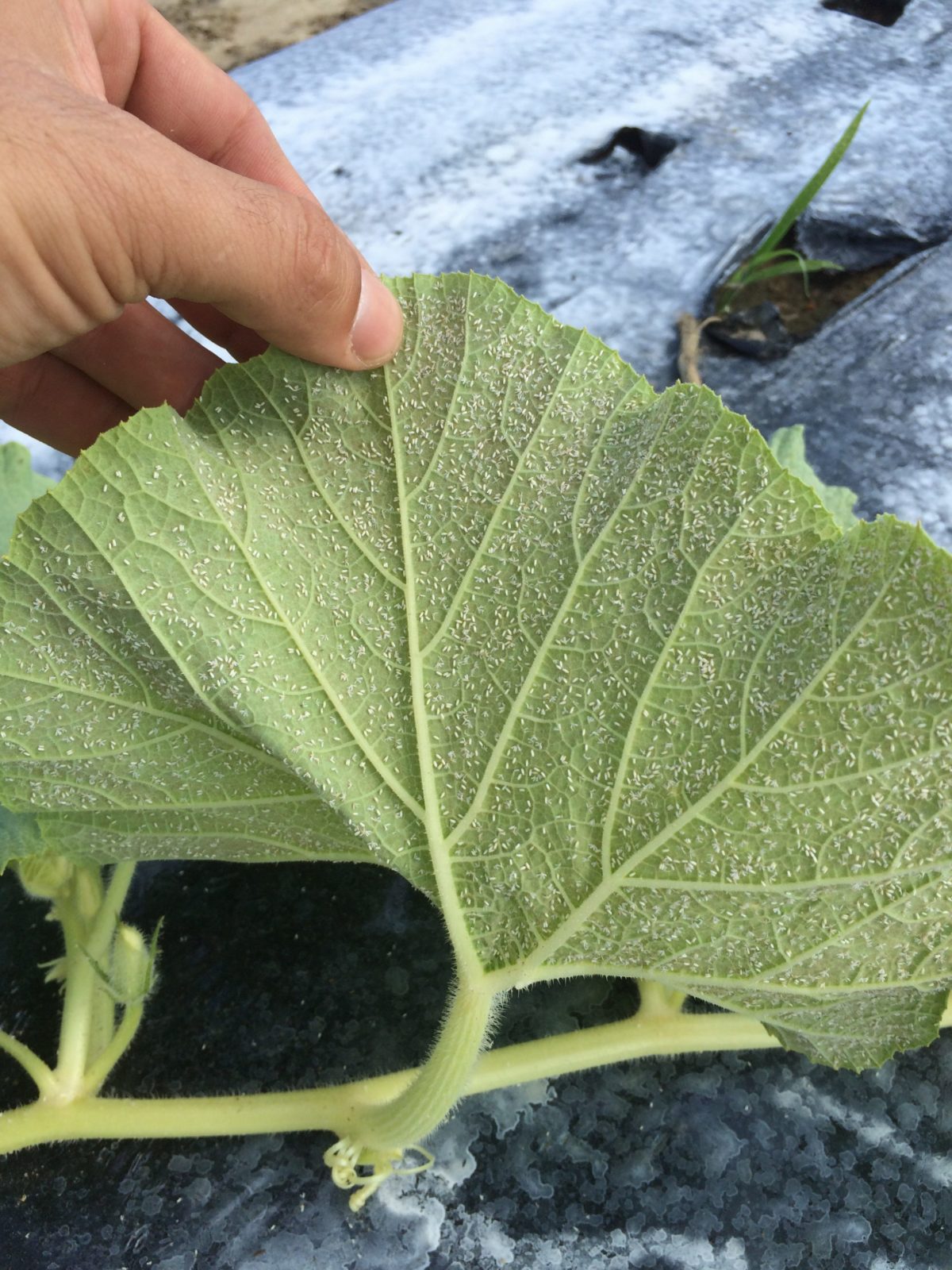While the normal time to plant turnip and mustard greens is now, Joe Kemble, Alabama Extension vegetable specialist, advises farmers and homeowners to wait a few weeks so temperatures can cool off. During a webinar on Aug. 19 that can be accessed on the Alabama Extension Commercial Horticulture Facebook page, Kemble said growers typically plant both greens in August through …
Hemp Scouting Important This Time of Year
Heat and humidity in the Southeast means hemp producers face challenges this season with regards to pests and diseases. Matthew Brecht, cannabis grower, hemp expert and plant pathologist with Marrone Bio Innovations, said scouting is essential for growers especially since not much research has been done with this relatively new crop. “Right now (hemp) should be transitioning to flowers. You …
Georgia Blueberry Producer: You Don’t Have to Have a Ph.D. in Economics to See What’s happening
Russ Goodman Talks About Impact of Unfair Trade Ahead of Thursday’s Virtual Hearing A prominent blueberry producer in Southeast Georgia believes the future of the American family farm could hinge on any action taken as a result of the virtual hearing scheduled for Thursday. Russ Goodman is one of several farmers and industry leaders in Georgia who will testify in …
Alabama Pest Alert
According to the Alabama Extension Commercial Horticulture Facebook page, insect pressure has increased significantly over the past two months. This was reported in 20 locations across Alabama, where moth counts from pheromone traps were collected. For example, the beet armyworm moth numbers were 823 as of Aug. 15, a 1.2X increase from the 682 reported on July 31. Host plants …
Fall Vegetable Crops Susceptible to Whiteflies
Unless more rain in the upcoming weeks can knock back populations, whiteflies are a huge concern for fall vegetable growers, according to Stormy Sparks, University of Georgia (UGA) Extension vegetable entomologist. “Right now, it’s looking pretty bad. It could be devastating. The populations are really high, and we’re just now getting started,” Sparks said. “I’ve got squash where the adult …
Georgia Farmer: What’s Right is to Help Support Us
Tifton, Georgia farmer Bill Brim is ready to voice his concerns about unfair trade practices during one of the two virtual hearings scheduled for Aug. 13 and Aug. 20 with the U.S. Trade Representative’s Office. The hearings will provide the U.S. Department of Commerce and Trump Administration an opportunity to hear from seasonal produce growers in Georgia and Florida on …
Howler Fungicide Provides Vegetable Growers with Multiple Modes of Action
Howler fungicide from AgBiome Innovations is a product that harnesses the power of the plant microbiome to create a fungicide with multiple modes of action. It provides preventive, long-lasting activity on a broad spectrum of soilborne and foliar diseases and does the job for a number of specialty crops. For Florida and South Georgia growers specifically, it’s great for strawberries, …
Flavorful Fruit Yields Sweet Results for Melon Farmers
Southeast watermelon growers delivered a flavorful crop this year that yielded a sweet price at the market, said Mark Arney, executive director of the National Watermelon Promotion Board. “We’re happy, we’re happy for the guys. Obviously, the guys that didn’t have a crop, it doesn’t matter how hot the market is, they’re not going to make money. We feel terrible …
Commissioner Fried Pleads for Secretary Perdue Expand CFAP to Include More Commodities
Tallahassee, Fla. – Florida Agriculture Commissioner Nikki Fried wrote to U.S. Secretary of Agriculture Sonny Perdue on Tuesday, once again asking the USDA to expand eligibility for the Coronavirus Food Assistance Program (CFAP) to include additional agricultural commodities. On July 9, the USDA announced expanded CFAP eligibility that included many impacted Florida crops, but aquaculture and horticulture commodities were not …
Auburn Economist Skeptical About Upcoming Trade Hearings
Two hearings on Aug. 13 and Aug. 20 with the U.S. Trade Representative’s Office will provide growers from Georgia and Florida the chance to voice their concerns over unfair trade. However, one economist is skeptical about the potential impact these hearings will have. Adam Rabinowitz, Associate Professor and Extension Economist at Auburn University, points to the lack of coverage for …











